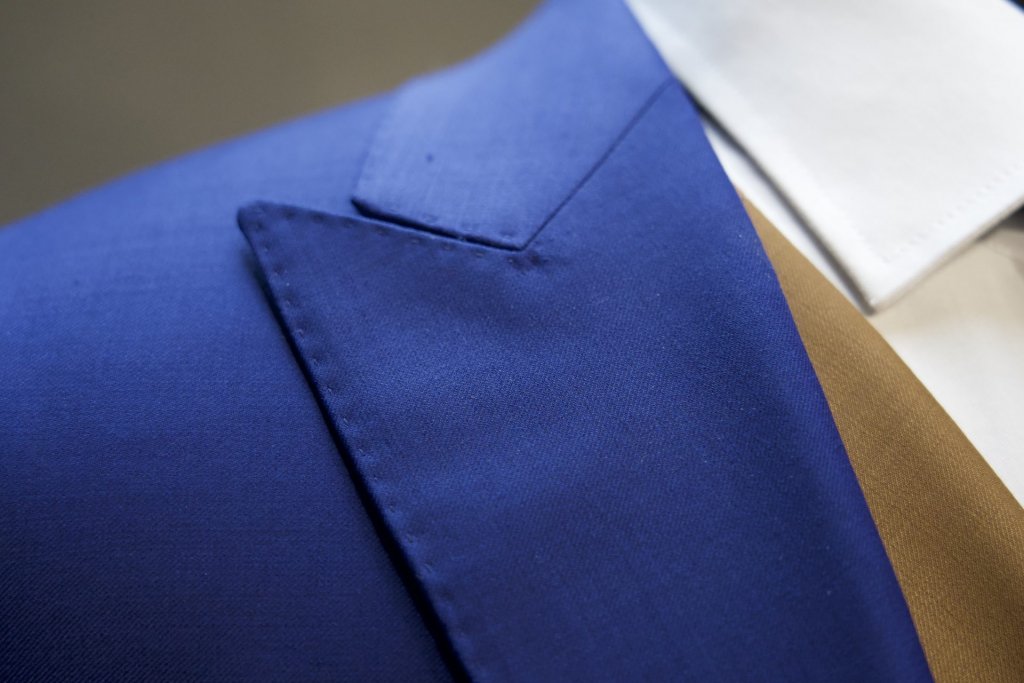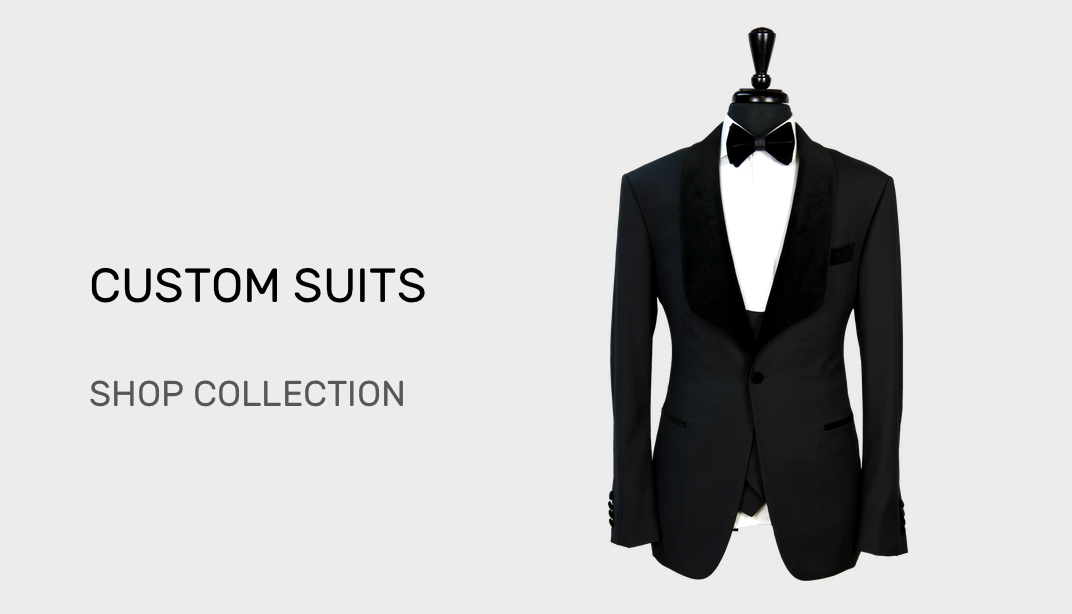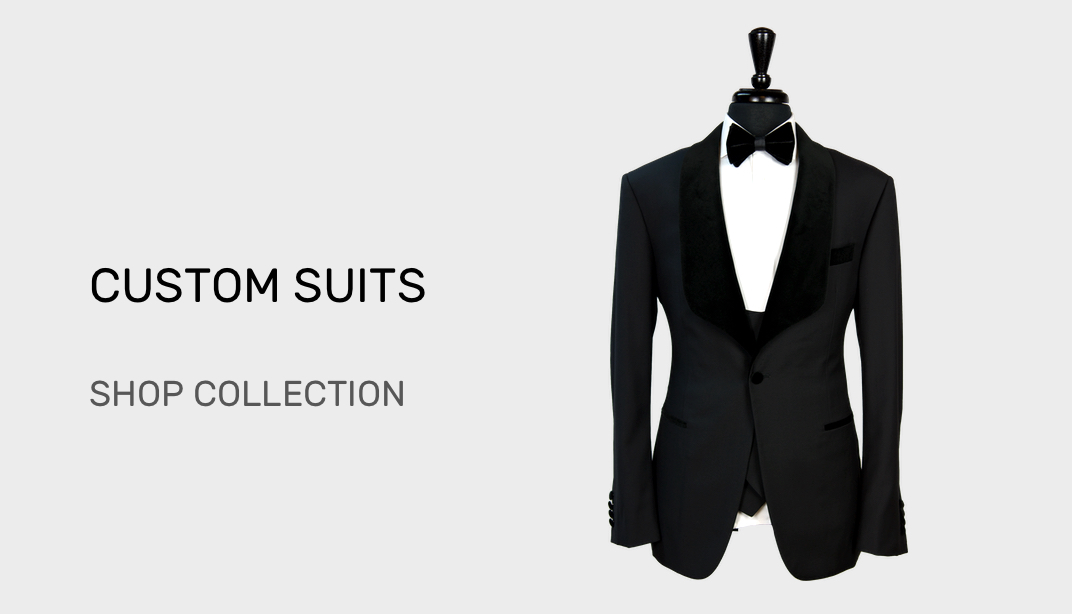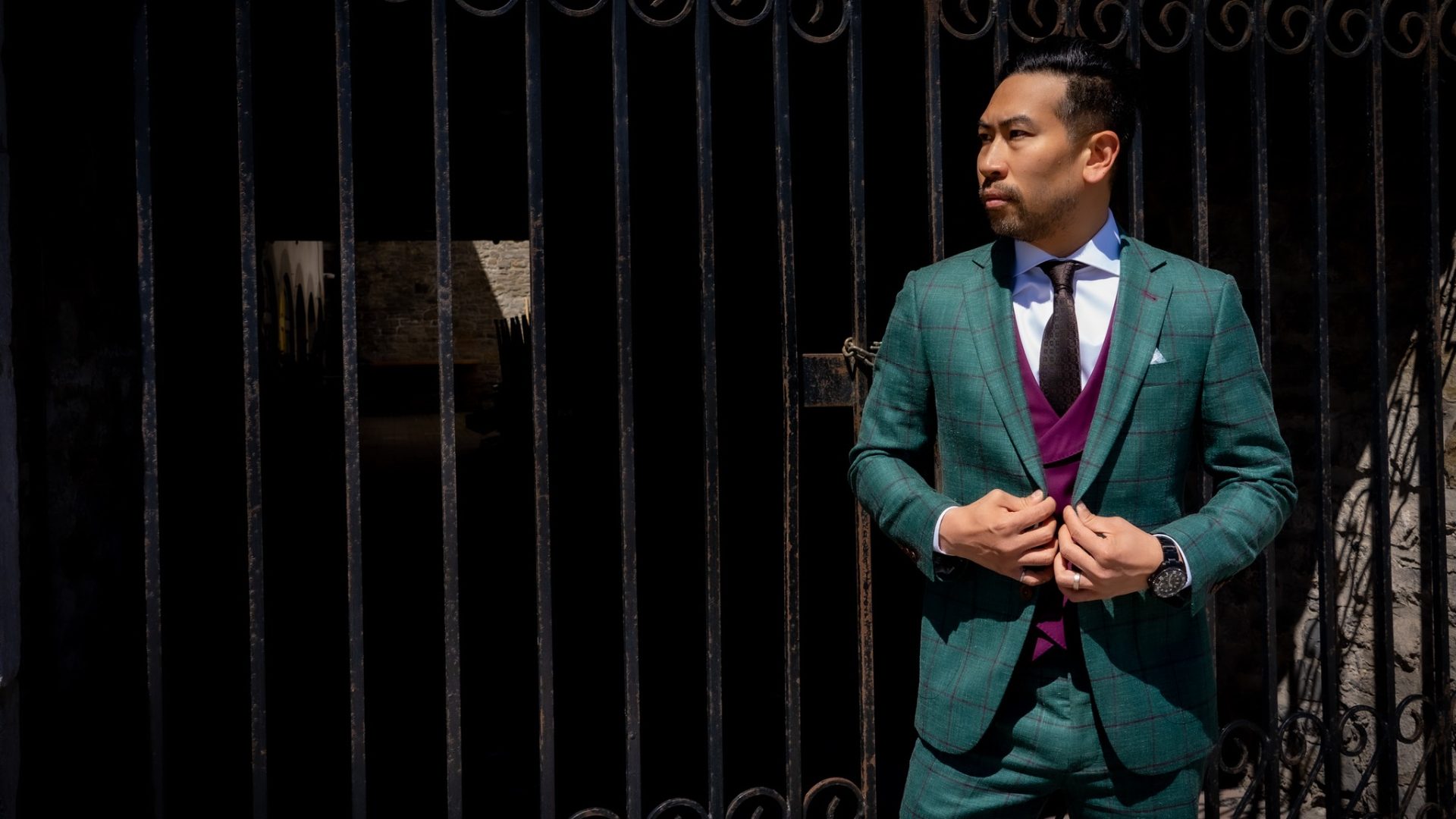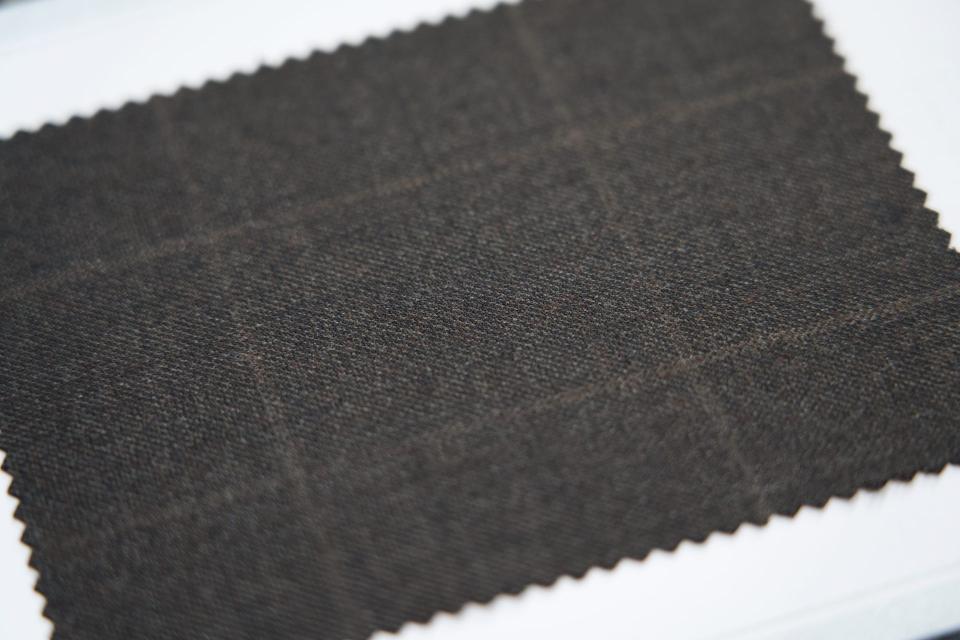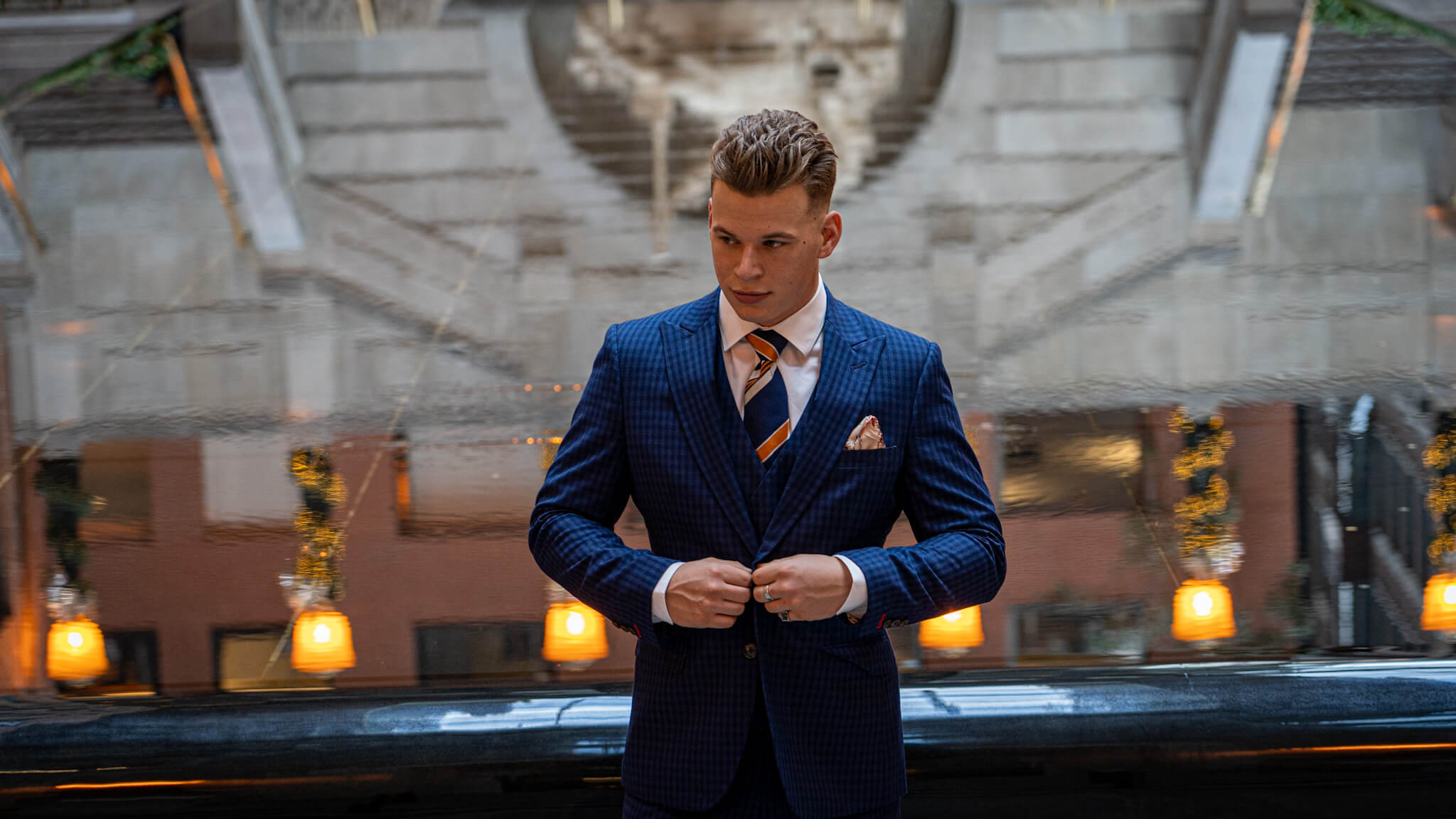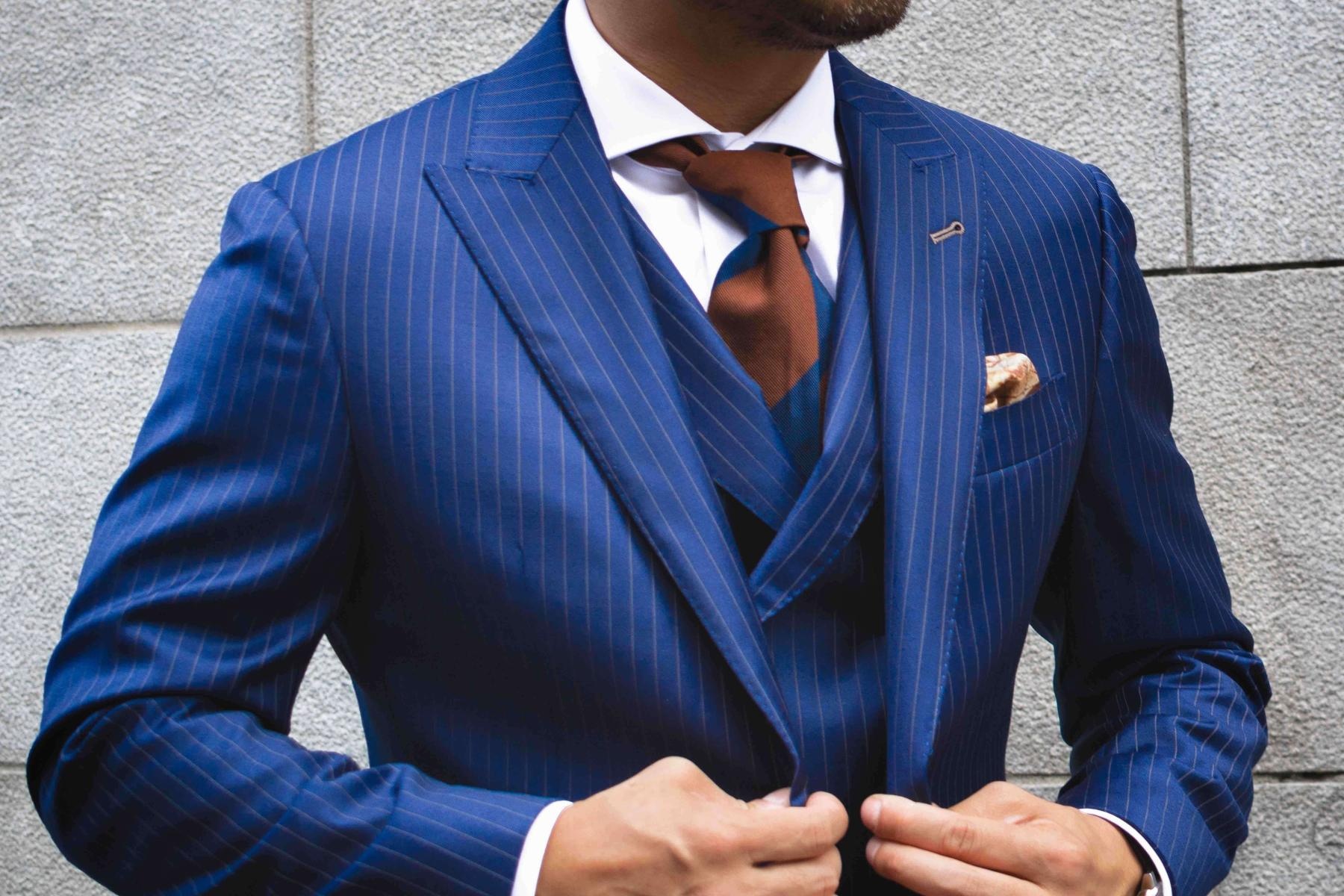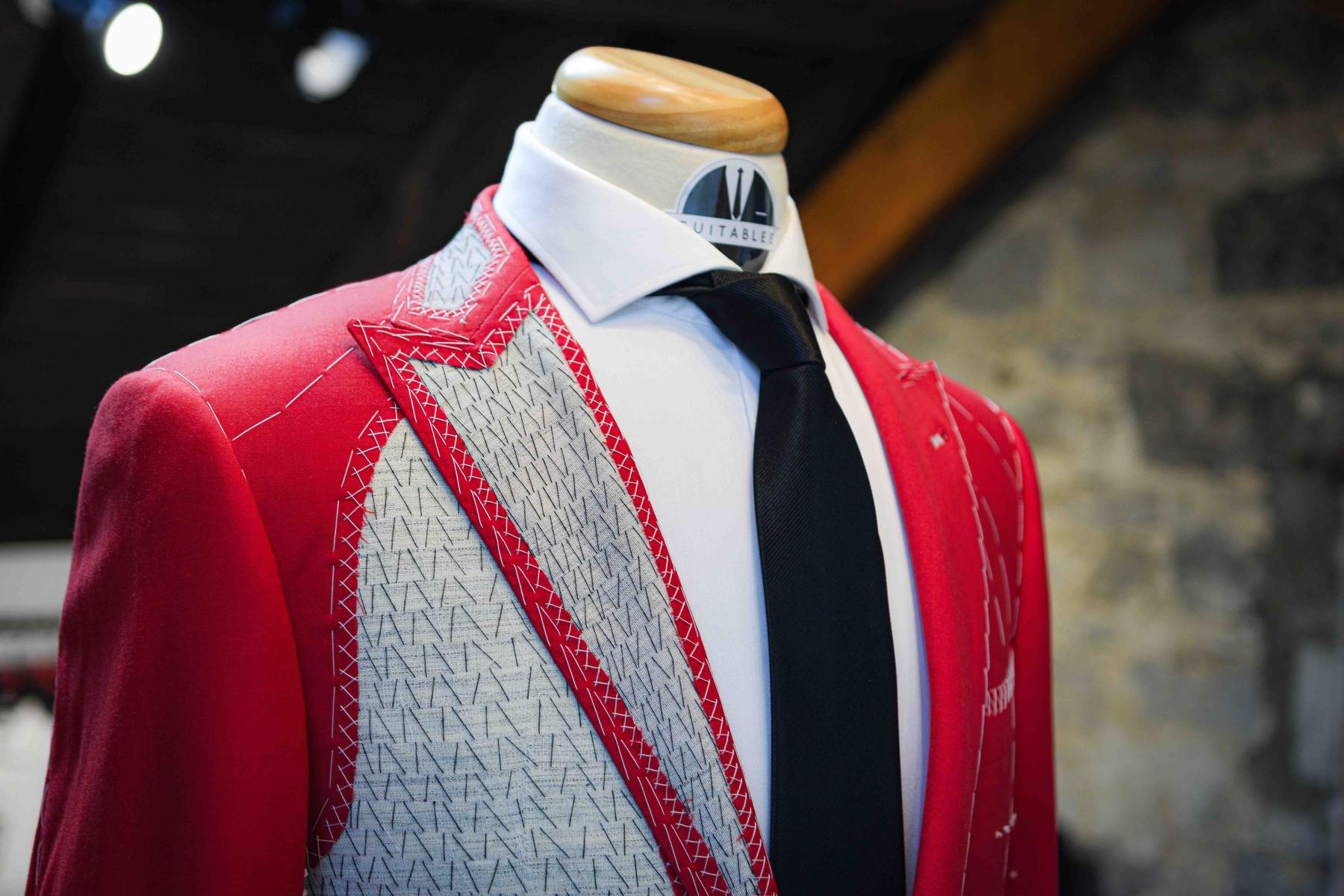-
MENSWEAR
-
Questions?
Schedule Appointment Schedule Virtual Consultation
Talk to us on our Live Chat or call us at 1-855-979-SUIT(7848)
-
-
WOMENSWEAR
-
Questions?
Schedule Appointment Schedule Virtual Consultation
Talk to us on our Live Chat or call us at 1-855-979-SUIT(7848)
-
-
DESIGN
-
Questions?
Schedule Appointment Schedule Virtual Consultation
Talk to us on our Live Chat or call us at 1-855-979-SUIT(7848)
-
-
SHOWROOMS
-
Questions?
Schedule Appointment Schedule Virtual Consultation
Talk to us on our Live Chat or call us at 1-855-979-SUIT(7848)
-
- Book Appointment
What Makes a Quality Suit | Custom Suits Made Easy.
The Fabric
The first thing to consider when evaluating a suit’s quality is the material used to make it. A high quality suit is made from 100% wool, and not just any kind of wool—merino wool.
Merino wool is a type of worsted wool, which differs from other woollens. The worsting process yields longer finer fibres that are parallel to each other and tightly bound. The resulting fabrics are lustrous and smooth.
What’s more is that merino wool is also strong. The fabric holds itself but can be easily flexed and stretched without damage. In essence, the more you wear a merino suit, the better the fit and comfort level.
Merino wool is also breathable, and much like silk, is versatile when it comes to keeping you warm or letting you cool off.
Another element to consider in terms of suit quality is fineness, often discussed in terms of the “Super number”. Individual fibres are measured in micrometers, and from that measure, the number of hanks that could be spun from a pound of raw wool is evaluated; the result of this equation is the Super number. The higher the number, the finer the fibres are. High quality fabrics are anywhere in the Super 100s to Super 250s range.
However, it is important not to base oneself solely on absolutes in this regard. The higher a fabric’s Super number is, the smoother and more malleable it is, yet the more fragile and less durable the it is. There is a trade off to be made and thus the sweat spot for a great suit is usually below Super 150.
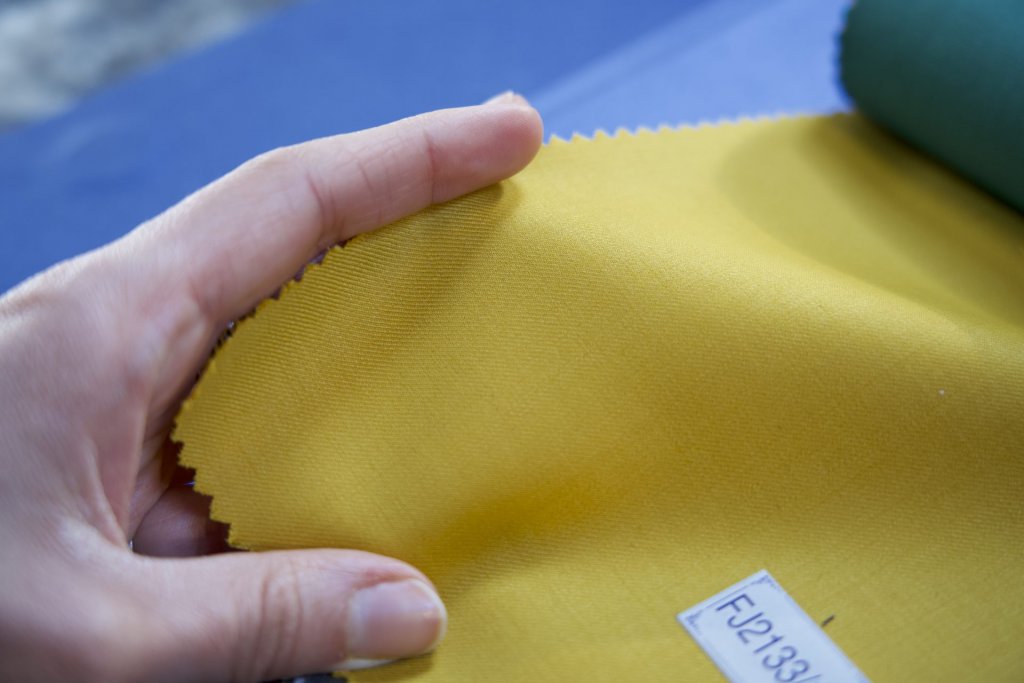
The Construction
Another key component in assessing the quality of a suit is the way the garment is constructed.
First and foremost, let’s examine the jacket. Note that using glue is out of the question when it comes to making a quality suit. Department stores and fast-fashion brands will use glue to make the outer and inner layer of a suit jacket adhere to each other. Not only does it make for an overly stiff piece, it also prevents air circulation, retaining oder, and causing you to feel sweaty and uncomfortable.
A high quality suit jacket is either made of a half canvas or a full canvas. A suit canvas is what sits between the outer suit fabric and the inner lining of a suit jacket. The canvas is made up of canvassing material, usually wool and horsehair or camel hair. This is an unseen yet essential part of a quality suit, as it not only binds the inner and outer layers together, but also maintains the jacket’s structure and molds itself to your body overtime—providing an ever better fit.
The canvas is hand stitched to the fabric loosely, allowing the jacket to move with your body and thus draping more naturally. A full-canvassed suit jacket has a canvas that spans across the entire front panels and lapels of a jacket. A half-canvassed suit jacket has a layer of canvas that extends from the shoulders to the chest. A full-canvassed suit is more expensive and is considered by some to be sturdier; a half-canvassed suit is less expensive and a little more flexible from the stomach down. What is important, in either case, is the quality of materials used in making the canvas, as well as the quality of craftsmanship employed in building it.
The jacket lapels are padded by using stitches that combine multiple cloth pieces in a way that hold them in place, giving each lapel its shape, referred to as the lapel “roll”. This curl is situated at the point in which the lapel transitions into the chest area, and can only be achieved with high quality canvas stitched in a specific manner. The lapel roll is an essential part of any high quality suit jacket, helping the lapel lay on the chest the way it should instead of slouching down in a cheap-looking way.
Pad stitching is also done with canvassing material at the collar. The shell cloth—the wool cloth placed on the outside layer of the collar—is joined with the canvas interlining, from the top of the shoulders down to the hem, providing stability to the piece. Shoulders are comprised of the best quality canvas to provide structure.
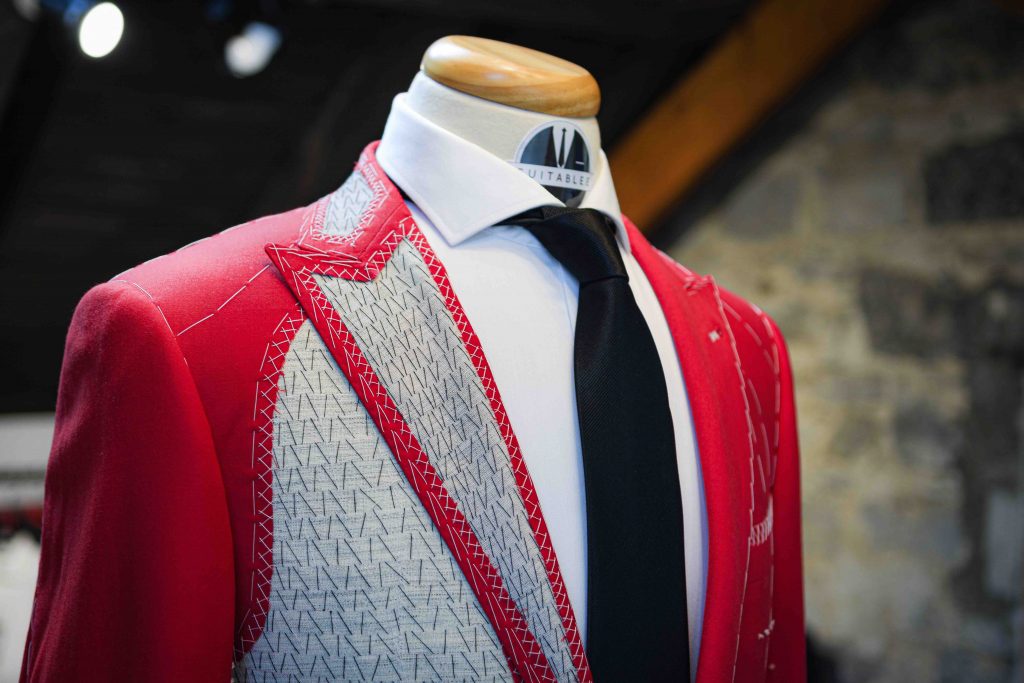
The inner lining of a jacket covers the front panels as well as the back, reducing friction and providing a thin, silky layer of breathable material around the body. Several useful pockets can be seamlessly included in the interior of the jacket as well.
Finally, all basting is removed during pressing and final preparation.
Now, let's discuss pants. There are several components that go into making a pair of quality suit trousers. High quality suit pants sometimes have an inner lining panel at the front of the leg, which should be either the same width as the leg, or slightly looser. The bottom of the lining should end before the pant cuff, and should be cut with pinking shears to soften the line and prevent it from showing. This lining panel at the front of the pant leg is not always necessary, but when it is there, it should be built as described above.
Well constructed trousers should have a piece of fabric under the fly that hides any inseam and adds some coverage. They should also have a strip of fabric at the front of the fly to hide the zipper, as well as curtain pleats on the inside front part of the pants. These curtain pleats are meant to cover the inlay at the top of the waistband.
Some suits have an adjustable strap instead of belt loops. When this is the case, there is an opening on each side of the waistband that lets a strap come through. This strap should be slightly narrower in width and be made up of the trouser fabric. It should be attached on both sides of the waist to buttons sown on the waistband. In some cases, small buckles are used instead of buttons. The important thing is this: in a well constructed pair of adjustable strap trousers, all the components described above should be seamlessly and elegantly integrated in the pants’ design.
It should be needless to say that, with your measurements provided, a well-constructed suit should fit to perfection.
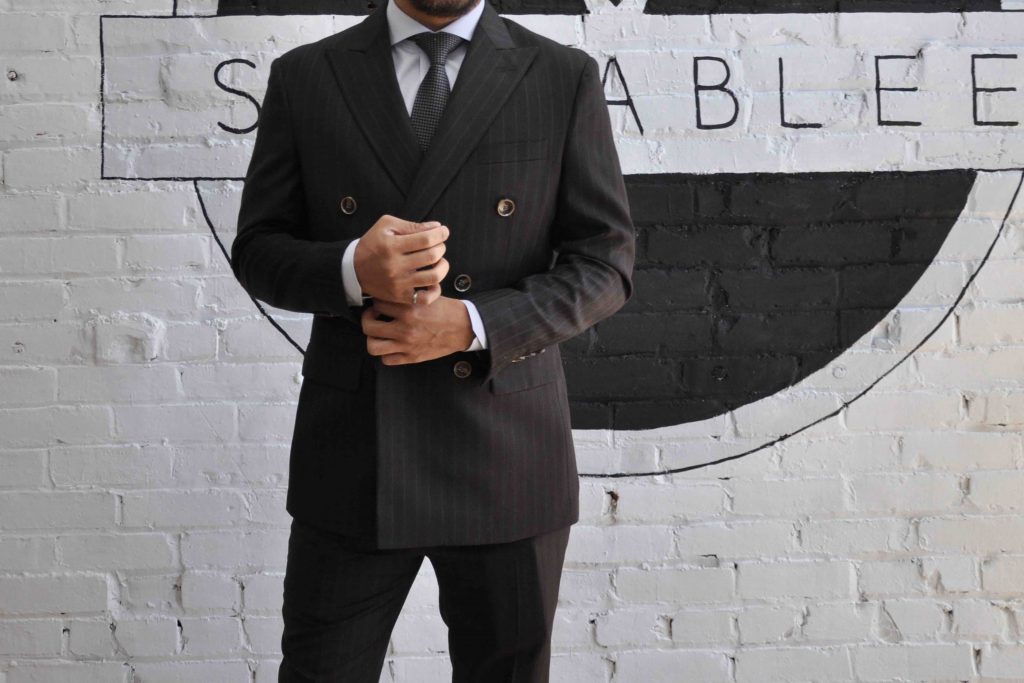
The Details that Matter
Last but not least, there are a few details that matter when it comes to the suit’s overall quality and flair. We’re here to shine a light on some of them.
Matching patters is one of those details. What this means is, in instances where a suit has a pattern such as a pinstripe or checkered print, it is aligned amongst the different parts of the garment, creating visual harmony. This detail might slip under the radar at first glance but its what makes a patterned suit look great versus just good.
Functional buttons and pockets is another one. Fake button holes at the sleeves and at the boutonniere are cheap, so it is only natural that a quality garment would not skimp on functionality and provide real button holes. In addition, a well-made boutonniere whole should have a piece of thread sown below it on the inside of the lapel; this is to help a boutonniere stem hold itself properly and remain in place. The same philosophy can be applied when it comes to pockets; a quality suit will have real pockets in which you can place your essentials.
Visible stitches. A quality suit will sometimes have subtle hand-sown stitching on the lapel, at the sleeves and centre back. This feature is not necessary, but a lot of high quality garments have it; it’s a tailor-made signature of sorts.
